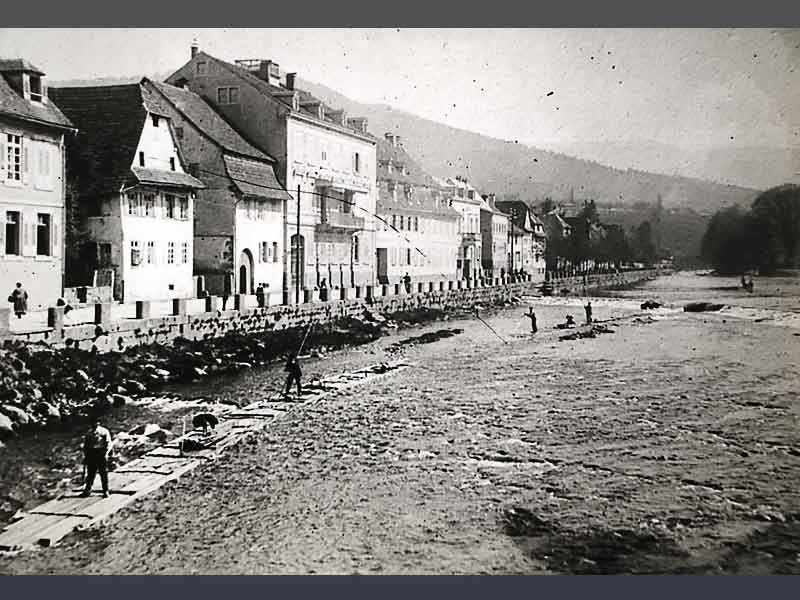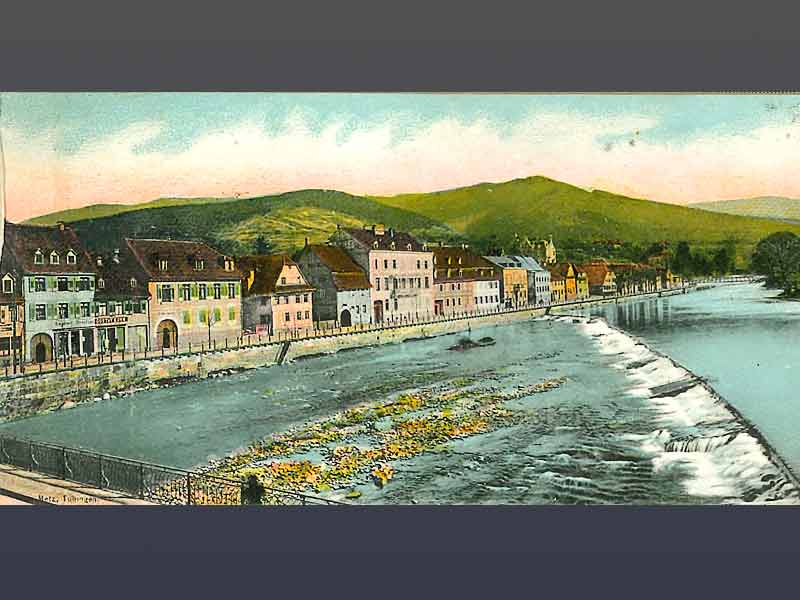Heutiges Rathaus
Der dreigeschossige Putzwerksteinbau mit Mittelbalkon und traufständigem Satteldach wurde 1863/64 als repräsentatives Wohnhaus errichtet. Im Erdgeschoss verfügte es über einen großen Saal. Bauherr war der bedeutende Gernsbacher Murgschiffer und Sägewerksbesitzer Casimir Otto Wielandt. Nach dem Tod von Tochter und Schwiegersohn gelangte das Haus in den Besitz seines Enkels Otto Weber, so dass es als Weber’sche Villa bekannt wurde.
1932, in der Zeit der Weltwirtschaftskrise, geriet das Haus im Wege einer Zwangsversteigerung in den Besitz der Bezirkssparkasse Gernsbach. Diese veräußerte es Ende 1934 an die Stadt Gernsbach. Diese plante zunächst, die Handelslehranstalt in das Gebäude zu verlegen. Auch wurden Teile des Hauses damals von verschiedenen NS-Organisationen genutzt.
Angesichts der Eingemeindung von Scheuern zum 1. April 1936 wurden bereits seit mehreren Jahren bestehende Überlegungen, der Stadtverwaltung bessere räumliche Arbeitsbedingungen zu ermöglichen, wieder akut. Noch im Mai 1936 wurde deshalb das Gebäude als „neues“ Rathaus bezogen.
1976/77 erhielt das Rathaus einen modernen Anbau. Der bislang im hinteren Bereich angesiedelte Bauhof wurde dafür an eine neue Stelle verlegt.
 Mobile
Mobile









